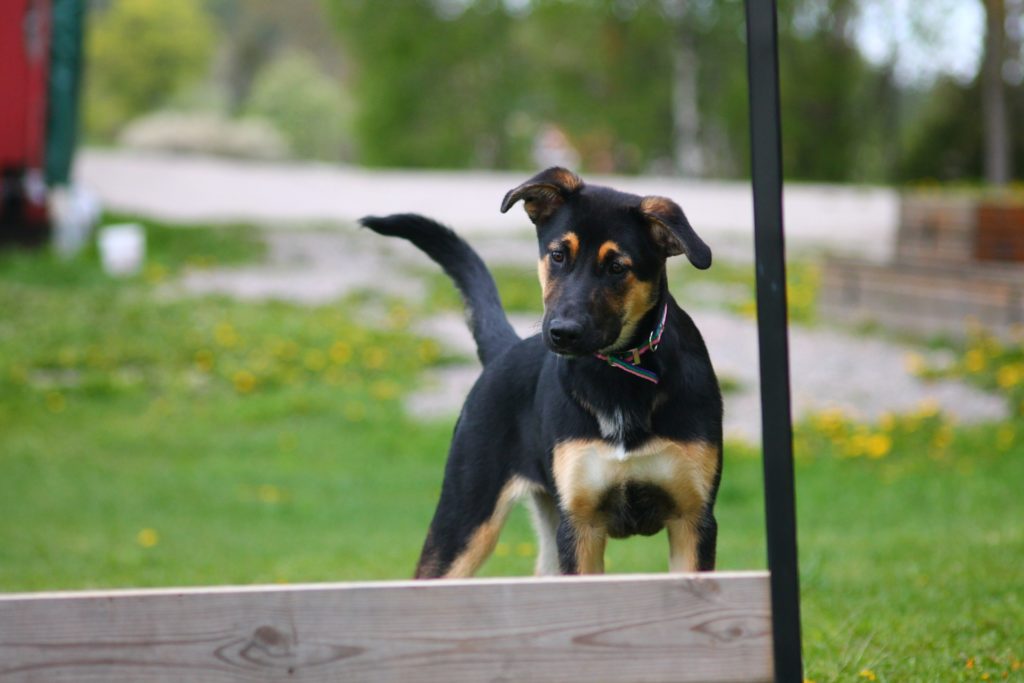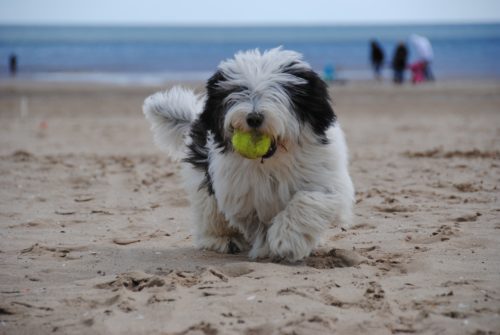Dog owners will go to great lengths to protect their beloved pooches from dangerous illnesses – after all, dogs aren’t just companions, but members of the family. Therefore, educating yourself as a pet parent is a responsibility not to be taken lightly.
Canine parvovirus (CPV) is an infectious viral disease that all pet parents need to be aware of, as it can lead to life-threatening illness. Certain dog breeds are more susceptible to this ailment, but all dogs should be vaccinated. This article will review the signs, symptoms, and treatment methods of this serious disease and how it can be prevented.
What Is Canine Parvovirus?
Canine parvovirus is a highly-contagious viral illness that can manifest itself in two different forms:
Intestinal CPV
The first and most common type of canine parvovirus is intestinal. Due to the aggressive nature of CPV, the virus attacks rapidly-dividing cells found in your dog’s body, most notably within the intestinal tract. Because the intestinal form of CPV inhibits your pet’s ability to absorb nutrients, he will become quickly dehydrated and weak from lack of fluid absorption and vital sustenance found in protein.
Parvo Symptoms in Puppies and Dogs Include:

- Bloody Diarrhea
- Vomiting
- Lack of appetite
- Extreme weight loss
- Lethargy
- Wet tissues of eyes & mouth may become noticeably red
- Rapid heartbeat
- Hypothermia (low body temperature)
- Indications of pain/discomfort in dog’s abdominal region
Cardiac CPV
The less common strain is cardiac CPV, which attacks the white blood cells and damages the heart muscles. This form of CPV can be very dangerous to young animals, causing lifelong cardiac complications and even lead to fatality in some instances. Most reported cases affect puppies between six weeks and six months old; however, the occurrence of CPV infections has been greatly reduced by administering early vaccinations.
How Is Canine Parvo Spread?
Due to the acutely contagious nature of CPV, it may be transmitted easily by any human, animal or inanimate object that comes in contact with an infected dog’s fecal matter. Although there are a number of risk factors that can elevate a dog’s susceptibility to the disease, CPV is spread primarily via direct contact with another infected dog, or indirectly, by the fecal-oral route.
Because an infected dog’s feces contains heavy concentrations of the virus, it can be contracted very easily when a healthy dog sniffs the stool. Unvaccinated dogs frequently contract CPV from the streets during their daily walks, primarily in urban areas where the dog population is much higher.
Parvo in dogs and puppies is also highly-resistant, and therefore may live in your home environment for months at a time if not disinfected properly – it can survive on household objects such as your pet’s food bowls, carpeting, floors, and even clothing. One of the most common ways CPV is spread indirectly, in fact, is by way of shoes that have come into contact with infected dog feces.
Studies have indicated that the virus is capable of living in ground soil for up to a year, and is impervious to weather changes as well as common cleaning agents.
How To Clean A CPV-Contaminated Area
- Wearing disposable latex gloves, pick up and safely dispose of all organic matter (feces, vomit etc.).
- Next, wash the affected area thoroughly with a household bleach solution (diluted 1 part bleach to 32 parts water, or 4 oz. of bleach to a gallon of water).
- Avoid using mops to clean, as it will only spread the virus around on hard surfaces and harbor germs within the mop itself. Instead, use rags or old towels and a scrub brush if necessary; dispose of safely after usage.
- Launder all affected clothing, bedding, furniture, carpeting, towels etc. in hot water, using a high-quality detergent and bleach; it is also advised to use a clothes dryer vs. hanging up items to dry.
- Be certain to wash hands thoroughly in hot water with antibacterial soap after any contact with a CPV-contaminated area. You may also wish to keep hand sanitizer on hand (use a product that is 70% alcohol); however, this should not be used in lieu of hand-washing, but as an added safety precaution.
Did You Know…
Research has shown that certain drug therapies and canine diseases that suppress the normal response of the immune system may also increase the chances of infection in some dogs; if you are uncertain as to the likelihood of your dog’s susceptibility, speak with your vet for more information.
The Dangers Of Not Vaccinating For Parvovirus
As discussed, parvo in dogs is easily transmitted; however, it can be prevented and controlled through adequate parvo vaccine protocols. There are numerous dog shelters and breeding kennels where unvaccinated puppies can become a health hazard to the canine population. Consequently, proceed with a degree of caution when adopting a new dog into your home. Be sure to research the breeder you’re adopting from to see if they are following appropriate practices with regard to cleanliness, medical treatment, vaccinations and so forth.
Did You Know…
There are certain dog breeds that are more prone to CPV, including Doberman Pinschers , Pit Bulls, Rottweilers, Staffordshire Bull Terriers, German Shepherds, Labrador Retrievers, Alaskan Sled Dogs, and English Springer Spaniels. Additionally, puppies, adolescent canines and dogs who aren’t vaccinated are most susceptible to parvovirus.
When Is it Time to Schedule A Vet Appointment?
It’s important to bring your dog to the vet immediately if you notice any of the following symptoms of CPV, including chronic bloody diarrhea, vomiting, loss of appetite, signs of dehydration, weight loss, depression, or lethargy. Because there are other serious health issues that mimic the symptoms, it’s essential to schedule an appointment.
A young puppy experiencing bloody diarrhea can signal the presence of other problems (such as parasites, colitis, a different virus, or the possibility of accidental ingestion of a small object that may be obstructing his digestive tract). Only your vet can perform an accurate diagnosis, and getting your dog to the office as soon as possible can avoid further complications or more serious health risks.
Diagnosing Puppy Parvovirus
In order to perform an accurate diagnosis of your dog, your vet will need to run a series of lab tests and check for clinical signs of parvo by conducting a complete physical examination. Tests may include:
- Enzyme Linked ImmunoSorbant Assay (ELISA): One of the most commonly-used tests to screen for parvovirus, ELISA is used to detect parvovirus in a dog’s fecal matter. This rapid testing method is usually completed within 15 minutes at your vet’s office; however, it is not always 100% accurate, so your veterinarian may recommend additional biochemical testing/bloodwork.
- Urine Analysis & Biochemical Tests: Your vet will run these tests to check for lymphopenia (a condition of low lymphocyte levels in the blood; these white blood cells have an important function in the immune system), electrolyte imbalances and elevated liver enzymes.
- Bloodwork: A complete blood cell count and a chemical blood profile will also be performed to check for levels; a low white blood count is indicative of CPV infection, particularly when bloody stools are present.
- Abdominal Ultrasounds: This targeted ultrasound is performed to check for enlarged lymph nodes in your dog’s groin or elsewhere in the body, as well as screen for fluid in the intestines.
- Abdominal Radiographs: Abdominal radiograph imaging will reveal signs of obstruction in your dog’s intestinal system.
Checklist: Preparing For Your Visit To The Vet

Once you’ve made an appointment to screen your dog for parvovirus, be sure to have the following information handy:
- A complete history of your dog’s health
- An approximation of the onset of signs and symptoms of parvo
- A record of recent activities
- A sample of your dog’s stool or vomit (enabling your vet to perform microscopic testing to see if the virus is present)
Is Canine Parvo Treatable?
Unfortunately CPV is a viral infection, so there is no cure for this dangerous canine disease. However, with intensive parvo treatment, recovery is possible if therapy is administered right away. A dog infected with parvo will require intensive supportive care in a veterinary hospital in order to control his symptoms and boost his immune system. This straightforward but aggressive form of therapy is targeted to cure existing symptoms and prevent secondary bacterial infections.
Therapy will include treatments to control vomiting, reduce nausea, and fight parasites. Additionally, your dog will be administered intravenous fluids and nutrition very carefully, as the virus leads to severe dehydration and depleted electrolyte/ protein levels. Due to the lengthy stay is required (dogs are usually kept 5-7 days to undergo treatment), pet owners should be prepared for the fairly high expense.
The survival rate for parvovirus is approximately 70% for most dogs; however, cases of extreme dehydration, bacterial toxins in the blood, an acute intestinal hemorrhage or a severe secondary bacterial infection may be fatal. Sadly, the prognosis is lower for puppies as a result of their underdeveloped immune systems.
Can I Treat A CPV Infection With Home Remedies?
Due to the serious nature of canine parvovirus, attempting treatment at home or administering homeopathic remedies is not advised. If you believe your dog is suffering from a CPV infection, be sure to schedule an appointment with your vet right away. Even with the finest medical attention, this disease is often fatal.

How Can I Prevent Parvovirus in Puppies?
The most effective form of prevention against this deadly disease is to ensure your dog is up to date on his vaccinations. Parvovirus should be recognized as a core vaccine for all puppies and adult dogs.
Experts advise vaccination at six, nine, and twelve weeks for young puppies, and outside socialization with other dogs should be avoided until at least two weeks after their last vaccination. It should also be noted that high-risk breeds may require a longer initial vaccination period (up to 22 weeks; check with your vet for information specific to your dog’s breed).
What To Expect After A CPV Infection
Because CPV can survive in an environment for many months, be sure to take extra precautions if there has been an infected dog in your household, yard or surrounding property. Here are a few tips to keep in mind:
- Boost His Immune System: Once your dog has undergone a CPV infection, he will be prone to other illnesses as a result of a weakened immune system. Your veterinarian can suggest different ways to bolster your pooch’s immune system, as well as preventative measures to avoid future illness or infections. Speak with your vet about dietary and/or dog food options for your recovering dog, preferably foods that are easily-digested.
- Isolation As A Safety Precaution: It’s also important to note that your dog will still be at risk for transmitting CPV after his recovery, as he is contagious for at least two months following the illness. Be sure to isolate your dog from other dogs for a length of time, and inform neighbors with dogs that they should have their pets tested.
- Clean House: Although hard surfaces are easier to clean than upholstered areas, even the most diligent cleaning regime cannot guarantee a complete eradication of this deadly virus, as parvo is resistant to many common household cleansers. A thorough housecleaning will be in order, including washing all objects your dog uses (such as bowls, crates/kennels, toys, blankets etc.) with non-toxic cleaners. Using a solution of one part bleach to 32 parts water throughout the home is a safe, inexpensive and effective way to rid your home of lingering infectious particles; administer for 10 minutes before rinsing for maximum efficacy. You may also use this solution on the soles of your shoes if you think you’ve walked through an infected area. Areas that are more difficult to clean (e.g., grassy areas, wood, carpeting, upholstery) may need to be sprayed with disinfectant, or even resurfaced. If you are unable to clean everything thoroughly, dispose of items that may have been contaminated.





